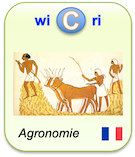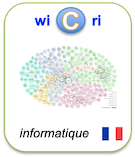Using GIS and historical records to reconstruct residential exposure to large-scale pesticide application.
Identifieur interne : 000488 ( PubMed/Curation ); précédent : 000487; suivant : 000489Using GIS and historical records to reconstruct residential exposure to large-scale pesticide application.
Auteurs : Julia Green Brody [États-Unis] ; Donna J. Vorhees ; Steven J. Melly ; Susan R. Swedis ; Peter J. Drivas ; Ruthann A. RudelSource :
- Journal of exposure analysis and environmental epidemiology [ 1053-4245 ]
English descriptors
- KwdEn :
- Agrochemicals (analysis), Documentation, Environmental Exposure (history), Environmental Monitoring (history), Environmental Monitoring (methods), Epidemiological Monitoring, Geography, History, 20th Century, Housing, Humans, Information Systems (instrumentation), Massachusetts (epidemiology), Models, Chemical, Pesticides (analysis), Pesticides (history), Statistics as Topic (methods).
- MESH :
- chemical , analysis : Agrochemicals, Pesticides.
- geographic , epidemiology : Massachusetts.
- history : Environmental Exposure, Environmental Monitoring, Pesticides.
- instrumentation : Information Systems.
- methods : Environmental Monitoring, Statistics as Topic.
- Documentation, Epidemiological Monitoring, Geography, History, 20th Century, Housing, Humans, Models, Chemical.
Abstract
Investigation of pesticide impacts on human health depends on good measures of exposure. Historical exposure data are needed to study health outcomes, such as cancer, that involve long latency periods, and other outcomes that are a function of the timing of exposure. Environmental or biological samples collected at the time of epidemiologic study may not represent historical exposure levels. To study the relationship between residential exposure to pesticides and breast cancer on Cape Cod, Massachusetts, historical records of pesticide use were integrated into a geographic information system (GIS) to estimate exposures from large-scale pesticide applications between 1948 and 1995. Information on pesticide use for gypsy moth and other tree/vegetative pest control, cranberry bog cultivation, other agriculture, mosquito control, recreational turf management, and rights-of-way maintenance is included in the database. Residents living within or near pesticide use areas may be exposed through inhalation due to drift and volatilization and through dermal contact and ingestion at the time of application or in later years from pesticides that deposit on soil, accumulate in crops, or migrate to groundwater. Procedures were developed to use the GIS to estimate the relative intensity of past exposures at each study subject's Cape Cod addresses over the past 40 years, taking into account local meteorological data, distance and direction from a residence to a pesticide use source area, size of the source area, application by ground-based or aerial methods, and persistent or nonpersistent character of the pesticide applied. The resulting individual-level estimates of relative exposure intensity can be used in conjunction with interview data to obtain more complete exposure assessment in an epidemiologic study. While the database can improve environmental epidemiological studies involving pesticides, it simultaneously illustrates important data gaps that cannot be filled. Studies such as this one have the potential to identify preventable causes of disease and guide public policies.
DOI: 10.1038/sj.jea.7500205
PubMed: 11859434
Links toward previous steps (curation, corpus...)
- to stream PubMed, to step Corpus: Pour aller vers cette notice dans l'étape Curation :000488
Links to Exploration step
pubmed:11859434Le document en format XML
<record><TEI><teiHeader><fileDesc><titleStmt><title xml:lang="en">Using GIS and historical records to reconstruct residential exposure to large-scale pesticide application.</title><author><name sortKey="Brody, Julia Green" sort="Brody, Julia Green" uniqKey="Brody J" first="Julia Green" last="Brody">Julia Green Brody</name><affiliation wicri:level="1"><nlm:affiliation>Silent Spring Institute, Newton, Massachusetts 02458, USA. brody@silentspring.org</nlm:affiliation><country xml:lang="fr">États-Unis</country><wicri:regionArea>Silent Spring Institute, Newton, Massachusetts 02458</wicri:regionArea></affiliation></author><author><name sortKey="Vorhees, Donna J" sort="Vorhees, Donna J" uniqKey="Vorhees D" first="Donna J" last="Vorhees">Donna J. Vorhees</name></author><author><name sortKey="Melly, Steven J" sort="Melly, Steven J" uniqKey="Melly S" first="Steven J" last="Melly">Steven J. Melly</name></author><author><name sortKey="Swedis, Susan R" sort="Swedis, Susan R" uniqKey="Swedis S" first="Susan R" last="Swedis">Susan R. Swedis</name></author><author><name sortKey="Drivas, Peter J" sort="Drivas, Peter J" uniqKey="Drivas P" first="Peter J" last="Drivas">Peter J. Drivas</name></author><author><name sortKey="Rudel, Ruthann A" sort="Rudel, Ruthann A" uniqKey="Rudel R" first="Ruthann A" last="Rudel">Ruthann A. Rudel</name></author></titleStmt><publicationStmt><idno type="wicri:source">PubMed</idno><date when="????"><PubDate><MedlineDate>2002 Jan-Feb</MedlineDate></PubDate></date><idno type="RBID">pubmed:11859434</idno><idno type="pmid">11859434</idno><idno type="doi">10.1038/sj.jea.7500205</idno><idno type="wicri:Area/PubMed/Corpus">000488</idno><idno type="wicri:explorRef" wicri:stream="PubMed" wicri:step="Corpus" wicri:corpus="PubMed">000488</idno><idno type="wicri:Area/PubMed/Curation">000488</idno><idno type="wicri:explorRef" wicri:stream="PubMed" wicri:step="Curation">000488</idno></publicationStmt><sourceDesc><biblStruct><analytic><title xml:lang="en">Using GIS and historical records to reconstruct residential exposure to large-scale pesticide application.</title><author><name sortKey="Brody, Julia Green" sort="Brody, Julia Green" uniqKey="Brody J" first="Julia Green" last="Brody">Julia Green Brody</name><affiliation wicri:level="1"><nlm:affiliation>Silent Spring Institute, Newton, Massachusetts 02458, USA. brody@silentspring.org</nlm:affiliation><country xml:lang="fr">États-Unis</country><wicri:regionArea>Silent Spring Institute, Newton, Massachusetts 02458</wicri:regionArea></affiliation></author><author><name sortKey="Vorhees, Donna J" sort="Vorhees, Donna J" uniqKey="Vorhees D" first="Donna J" last="Vorhees">Donna J. Vorhees</name></author><author><name sortKey="Melly, Steven J" sort="Melly, Steven J" uniqKey="Melly S" first="Steven J" last="Melly">Steven J. Melly</name></author><author><name sortKey="Swedis, Susan R" sort="Swedis, Susan R" uniqKey="Swedis S" first="Susan R" last="Swedis">Susan R. Swedis</name></author><author><name sortKey="Drivas, Peter J" sort="Drivas, Peter J" uniqKey="Drivas P" first="Peter J" last="Drivas">Peter J. Drivas</name></author><author><name sortKey="Rudel, Ruthann A" sort="Rudel, Ruthann A" uniqKey="Rudel R" first="Ruthann A" last="Rudel">Ruthann A. Rudel</name></author></analytic><series><title level="j">Journal of exposure analysis and environmental epidemiology</title><idno type="ISSN">1053-4245</idno></series></biblStruct></sourceDesc></fileDesc><profileDesc><textClass><keywords scheme="KwdEn" xml:lang="en"><term>Agrochemicals (analysis)</term><term>Documentation</term><term>Environmental Exposure (history)</term><term>Environmental Monitoring (history)</term><term>Environmental Monitoring (methods)</term><term>Epidemiological Monitoring</term><term>Geography</term><term>History, 20th Century</term><term>Housing</term><term>Humans</term><term>Information Systems (instrumentation)</term><term>Massachusetts (epidemiology)</term><term>Models, Chemical</term><term>Pesticides (analysis)</term><term>Pesticides (history)</term><term>Statistics as Topic (methods)</term></keywords><keywords scheme="MESH" type="chemical" qualifier="analysis" xml:lang="en"><term>Agrochemicals</term><term>Pesticides</term></keywords><keywords scheme="MESH" type="geographic" qualifier="epidemiology" xml:lang="en"><term>Massachusetts</term></keywords><keywords scheme="MESH" qualifier="history" xml:lang="en"><term>Environmental Exposure</term><term>Environmental Monitoring</term><term>Pesticides</term></keywords><keywords scheme="MESH" qualifier="instrumentation" xml:lang="en"><term>Information Systems</term></keywords><keywords scheme="MESH" qualifier="methods" xml:lang="en"><term>Environmental Monitoring</term><term>Statistics as Topic</term></keywords><keywords scheme="MESH" xml:lang="en"><term>Documentation</term><term>Epidemiological Monitoring</term><term>Geography</term><term>History, 20th Century</term><term>Housing</term><term>Humans</term><term>Models, Chemical</term></keywords></textClass></profileDesc></teiHeader><front><div type="abstract" xml:lang="en">Investigation of pesticide impacts on human health depends on good measures of exposure. Historical exposure data are needed to study health outcomes, such as cancer, that involve long latency periods, and other outcomes that are a function of the timing of exposure. Environmental or biological samples collected at the time of epidemiologic study may not represent historical exposure levels. To study the relationship between residential exposure to pesticides and breast cancer on Cape Cod, Massachusetts, historical records of pesticide use were integrated into a geographic information system (GIS) to estimate exposures from large-scale pesticide applications between 1948 and 1995. Information on pesticide use for gypsy moth and other tree/vegetative pest control, cranberry bog cultivation, other agriculture, mosquito control, recreational turf management, and rights-of-way maintenance is included in the database. Residents living within or near pesticide use areas may be exposed through inhalation due to drift and volatilization and through dermal contact and ingestion at the time of application or in later years from pesticides that deposit on soil, accumulate in crops, or migrate to groundwater. Procedures were developed to use the GIS to estimate the relative intensity of past exposures at each study subject's Cape Cod addresses over the past 40 years, taking into account local meteorological data, distance and direction from a residence to a pesticide use source area, size of the source area, application by ground-based or aerial methods, and persistent or nonpersistent character of the pesticide applied. The resulting individual-level estimates of relative exposure intensity can be used in conjunction with interview data to obtain more complete exposure assessment in an epidemiologic study. While the database can improve environmental epidemiological studies involving pesticides, it simultaneously illustrates important data gaps that cannot be filled. Studies such as this one have the potential to identify preventable causes of disease and guide public policies.</div></front></TEI><pubmed><MedlineCitation Status="MEDLINE" Owner="NLM"><PMID Version="1">11859434</PMID><DateCreated><Year>2002</Year><Month>02</Month><Day>22</Day></DateCreated><DateCompleted><Year>2002</Year><Month>06</Month><Day>25</Day></DateCompleted><DateRevised><Year>2012</Year><Month>11</Month><Day>15</Day></DateRevised><Article PubModel="Print"><Journal><ISSN IssnType="Print">1053-4245</ISSN><JournalIssue CitedMedium="Print"><Volume>12</Volume><Issue>1</Issue><PubDate><MedlineDate>2002 Jan-Feb</MedlineDate></PubDate></JournalIssue><Title>Journal of exposure analysis and environmental epidemiology</Title><ISOAbbreviation>J Expo Anal Environ Epidemiol</ISOAbbreviation></Journal><ArticleTitle>Using GIS and historical records to reconstruct residential exposure to large-scale pesticide application.</ArticleTitle><Pagination><MedlinePgn>64-80</MedlinePgn></Pagination><Abstract><AbstractText>Investigation of pesticide impacts on human health depends on good measures of exposure. Historical exposure data are needed to study health outcomes, such as cancer, that involve long latency periods, and other outcomes that are a function of the timing of exposure. Environmental or biological samples collected at the time of epidemiologic study may not represent historical exposure levels. To study the relationship between residential exposure to pesticides and breast cancer on Cape Cod, Massachusetts, historical records of pesticide use were integrated into a geographic information system (GIS) to estimate exposures from large-scale pesticide applications between 1948 and 1995. Information on pesticide use for gypsy moth and other tree/vegetative pest control, cranberry bog cultivation, other agriculture, mosquito control, recreational turf management, and rights-of-way maintenance is included in the database. Residents living within or near pesticide use areas may be exposed through inhalation due to drift and volatilization and through dermal contact and ingestion at the time of application or in later years from pesticides that deposit on soil, accumulate in crops, or migrate to groundwater. Procedures were developed to use the GIS to estimate the relative intensity of past exposures at each study subject's Cape Cod addresses over the past 40 years, taking into account local meteorological data, distance and direction from a residence to a pesticide use source area, size of the source area, application by ground-based or aerial methods, and persistent or nonpersistent character of the pesticide applied. The resulting individual-level estimates of relative exposure intensity can be used in conjunction with interview data to obtain more complete exposure assessment in an epidemiologic study. While the database can improve environmental epidemiological studies involving pesticides, it simultaneously illustrates important data gaps that cannot be filled. Studies such as this one have the potential to identify preventable causes of disease and guide public policies.</AbstractText></Abstract><AuthorList CompleteYN="Y"><Author ValidYN="Y"><LastName>Brody</LastName><ForeName>Julia Green</ForeName><Initials>JG</Initials><AffiliationInfo><Affiliation>Silent Spring Institute, Newton, Massachusetts 02458, USA. brody@silentspring.org</Affiliation></AffiliationInfo></Author><Author ValidYN="Y"><LastName>Vorhees</LastName><ForeName>Donna J</ForeName><Initials>DJ</Initials></Author><Author ValidYN="Y"><LastName>Melly</LastName><ForeName>Steven J</ForeName><Initials>SJ</Initials></Author><Author ValidYN="Y"><LastName>Swedis</LastName><ForeName>Susan R</ForeName><Initials>SR</Initials></Author><Author ValidYN="Y"><LastName>Drivas</LastName><ForeName>Peter J</ForeName><Initials>PJ</Initials></Author><Author ValidYN="Y"><LastName>Rudel</LastName><ForeName>Ruthann A</ForeName><Initials>RA</Initials></Author></AuthorList><Language>eng</Language><PublicationTypeList><PublicationType UI="D016456">Historical Article</PublicationType><PublicationType UI="D016428">Journal Article</PublicationType><PublicationType UI="D013485">Research Support, Non-U.S. Gov't</PublicationType><PublicationType UI="D013487">Research Support, U.S. Gov't, P.H.S.</PublicationType></PublicationTypeList></Article><MedlineJournalInfo><Country>England</Country><MedlineTA>J Expo Anal Environ Epidemiol</MedlineTA><NlmUniqueID>9111438</NlmUniqueID><ISSNLinking>1053-4245</ISSNLinking></MedlineJournalInfo><ChemicalList><Chemical><RegistryNumber>0</RegistryNumber><NameOfSubstance UI="D016573">Agrochemicals</NameOfSubstance></Chemical><Chemical><RegistryNumber>0</RegistryNumber><NameOfSubstance UI="D010575">Pesticides</NameOfSubstance></Chemical></ChemicalList><CitationSubset>IM</CitationSubset><MeshHeadingList><MeshHeading><DescriptorName UI="D016573" MajorTopicYN="N">Agrochemicals</DescriptorName><QualifierName UI="Q000032" MajorTopicYN="N">analysis</QualifierName></MeshHeading><MeshHeading><DescriptorName UI="D004282" MajorTopicYN="N">Documentation</DescriptorName></MeshHeading><MeshHeading><DescriptorName UI="D004781" MajorTopicYN="N">Environmental Exposure</DescriptorName><QualifierName UI="Q000266" MajorTopicYN="Y">history</QualifierName></MeshHeading><MeshHeading><DescriptorName UI="D004784" MajorTopicYN="N">Environmental Monitoring</DescriptorName><QualifierName UI="Q000266" MajorTopicYN="Y">history</QualifierName><QualifierName UI="Q000379" MajorTopicYN="N">methods</QualifierName></MeshHeading><MeshHeading><DescriptorName UI="D062665" MajorTopicYN="N">Epidemiological Monitoring</DescriptorName></MeshHeading><MeshHeading><DescriptorName UI="D005843" MajorTopicYN="N">Geography</DescriptorName></MeshHeading><MeshHeading><DescriptorName UI="D049673" MajorTopicYN="N">History, 20th Century</DescriptorName></MeshHeading><MeshHeading><DescriptorName UI="D006798" MajorTopicYN="N">Housing</DescriptorName></MeshHeading><MeshHeading><DescriptorName UI="D006801" MajorTopicYN="N">Humans</DescriptorName></MeshHeading><MeshHeading><DescriptorName UI="D007256" MajorTopicYN="N">Information Systems</DescriptorName><QualifierName UI="Q000295" MajorTopicYN="N">instrumentation</QualifierName></MeshHeading><MeshHeading><DescriptorName UI="D008404" MajorTopicYN="N" Type="Geographic">Massachusetts</DescriptorName><QualifierName UI="Q000453" MajorTopicYN="N">epidemiology</QualifierName></MeshHeading><MeshHeading><DescriptorName UI="D008956" MajorTopicYN="N">Models, Chemical</DescriptorName></MeshHeading><MeshHeading><DescriptorName UI="D010575" MajorTopicYN="N">Pesticides</DescriptorName><QualifierName UI="Q000032" MajorTopicYN="N">analysis</QualifierName><QualifierName UI="Q000266" MajorTopicYN="Y">history</QualifierName></MeshHeading><MeshHeading><DescriptorName UI="D013223" MajorTopicYN="N">Statistics as Topic</DescriptorName><QualifierName UI="Q000379" MajorTopicYN="N">methods</QualifierName></MeshHeading></MeshHeadingList></MedlineCitation><PubmedData><History><PubMedPubDate PubStatus="received"><Year>2001</Year><Month>11</Month><Day>28</Day></PubMedPubDate><PubMedPubDate PubStatus="pubmed"><Year>2002</Year><Month>2</Month><Day>23</Day><Hour>10</Hour><Minute>0</Minute></PubMedPubDate><PubMedPubDate PubStatus="medline"><Year>2002</Year><Month>6</Month><Day>26</Day><Hour>10</Hour><Minute>1</Minute></PubMedPubDate><PubMedPubDate PubStatus="entrez"><Year>2002</Year><Month>2</Month><Day>23</Day><Hour>10</Hour><Minute>0</Minute></PubMedPubDate></History><PublicationStatus>ppublish</PublicationStatus><ArticleIdList><ArticleId IdType="pubmed">11859434</ArticleId><ArticleId IdType="doi">10.1038/sj.jea.7500205</ArticleId></ArticleIdList></PubmedData></pubmed></record>Pour manipuler ce document sous Unix (Dilib)
EXPLOR_STEP=$WICRI_ROOT/Wicri/Agronomie/explor/SisAgriV1/Data/PubMed/Curation
HfdSelect -h $EXPLOR_STEP/biblio.hfd -nk 000488 | SxmlIndent | more
Ou
HfdSelect -h $EXPLOR_AREA/Data/PubMed/Curation/biblio.hfd -nk 000488 | SxmlIndent | more
Pour mettre un lien sur cette page dans le réseau Wicri
{{Explor lien
|wiki= Wicri/Agronomie
|area= SisAgriV1
|flux= PubMed
|étape= Curation
|type= RBID
|clé= pubmed:11859434
|texte= Using GIS and historical records to reconstruct residential exposure to large-scale pesticide application.
}}
Pour générer des pages wiki
HfdIndexSelect -h $EXPLOR_AREA/Data/PubMed/Curation/RBID.i -Sk "pubmed:11859434" \
| HfdSelect -Kh $EXPLOR_AREA/Data/PubMed/Curation/biblio.hfd \
| NlmPubMed2Wicri -a SisAgriV1
|
| This area was generated with Dilib version V0.6.28. | |

